“Hello Everyone!
Today I have for you the formula of a super hydrating serum! It is simple to make, it contains ingredients that are rather easy to find and it is highly performing!
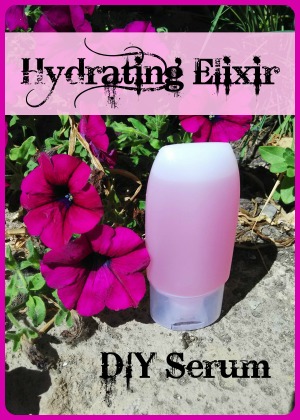
Where I live we have had over 40°C and so I decided to formulate something that would behave well if stored in the fridge (before you start having heart-shaped-sparkling eyes: you still need to add the preservative. Repeat with me: THERE IS NO ESCAPE FROM PRESERVATIVES! 😀 good, now you can continue reading). One of the cosmetics I always store in the fridge is the basic Hyaluronic Acid Gel (you can find the recipe HERE), so I have simply “upgraded” the formula to make it more performing (I have already posted two recipes for two upgraded versions of the Hyaluronic Acid Gel, you can find them Here and Here).
In this formula I have included two salts which nowadays I find hard to add to most of my lotions, and that’s because I have fallen in love with my new polymeric emulsifiers (they don’t like salts, no, they are some picky bast*&*$… but lovely nonetheless 😀 ).
Sodium PCA and Sodium Lactate are both naturally found in our skin as they are components of the NMF. They are very powerful humectants and they are rather cheap and easy to find! 🙂
This formula is extremely simple, but there is one ingredient which I have already talked about (HERE) and needs a little caution: Niacinamide (or Vitamin B3).
I love this ingredient, specially in summer, but it needs a neutral pH (you can go as low as pH 6), so it is really essential to have a pH meter or at least some “as reliable as possible” pH strips.
Now to the FORMULA:
Water to 100%
Sodium Hyaluronate (high molecular weight) 1%
Sodium Hyaluronate (low molecular weight) 0.5%
Sodium Lactate 2%
Sodium PCA 1%
Check the pH and adjust it between pH 6 and pH 7 if needed
Niacinamide 2.5%
D-Panthenol 0.5%
Phenonip 0.5%
Fragrance oil (cosmetic grade) 02%
HOW TO PROCEED:
1) Calculate the amount of water needed. Measure the water in a beaker. Separately measure the Sodium Hyaluronate with high molecular weight and pour it on top of the water.
If you are a patient person you follow the instructions HERE.
If you are like me, you mix it (you can use a stick blender) – if you do this, it won’t look transparent at first, but eventually it will.
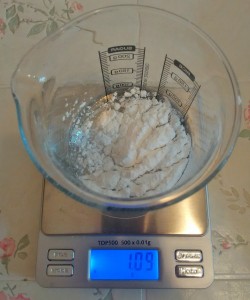
2) Now measure the low molecular weight Sodium Hyaluronate and do the same thing as above.
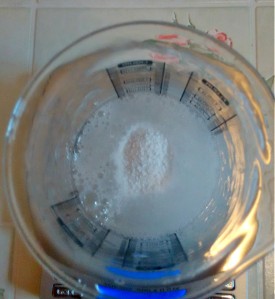
3) Add Sodium Lactate and Sodium PCA. Mix.
4) Measure the pH.
5) Adjust the pH – mine was a little higher (around 7.5) so I lowered it to pH 6.5 adding a couple of drops of lactic acid (the counter part of sodium lactate).
6) add the remaining ingredients and eventually check the pH again and adjust accordingly.
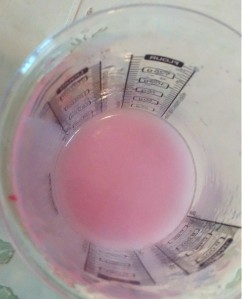
I have added one drop of pink food colorant cause I like to pamper myself with colors. Of course it is not necessary and you can omit it.
The Fragrance Oil used in this Serum was Rock Candy from Sensory Perfection (the Lush dupe for “Rock Star”) and I LOVE IT! 🙂
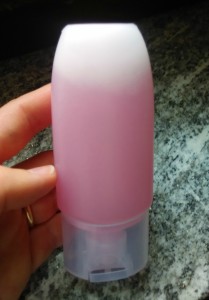
I have used this serum in the last few weeks.
I was concerned that, because of the high concentration of my hygroscopic ingredients, it would feel sticky and unbearable (specially in 40°C!) but luckily it is not at all! I believe good part of this is thanks to the Niacinamide.
I apply only one drop and the skin feels extremely smooth, the first times I found it quite unbelievable.

I hope you enjoyed this formula! 🙂
Let me know if you have any questions and if you try making it yourself! 🙂

Very nice DIY
LikeLiked by 1 person
Thank you! 🙂
LikeLike
Hello. Thanks for interesting post. I made this HA last week and i would want to add few more active ingredients.
Can i add propanediol, sesaflash and silk peptide, vitamin B3 to this HA serum? I domt know if it would be appropriate.
And i use preservative PE 9010. They dont sale phenonip here 😂 Have you used it before?
Thanks, Allie.
LikeLike
And coenzym q10, too. ^
LikeLike
Q10 is not soluble in water and this is an oil free formula without an emulsifier so you would need to make a lotion and not a cream, add some polar oils and an emulsifier as well.
LikeLike
What is the INCI of PE 9010? I don’t know that commercial name.
It would have been better to add the ingredients in the formula in the beginning because if you add anything now, the formula won’t be in % anymore (you will have added a % of preservative enough for 100% of formula but if you add 5 grams of something else now, you will have 105 grams of product and the preservative for 100 grams).
However! You could add something to that serum, but why would you add propanediol?
Vitamin B 3 is the one I have added here as well, you can add it but absolutely check the pH before and after you do (if the pH is not right, this ingredient becomes nasty for the skin).
Silk peptide, I guess that is hydrolozed, so it should be fine 😉 I have doubts about propanediol: I haven’t tried it now but I don’t know what effect it would have and I am not sure about its solubility?
LikeLike
I have lactic acid at 100%. Is it safe to add in order to adjust ph to 6-6.5?
Thanks
De
LikeLike
Hello,
Yes you can add lactic acid, just be sure to add ONE or two drops at a time, stir very well and measure the pH until you reach the desired pH. 🙂
LikeLike
Thank you for your quick response. I am very excited to try it on.
LikeLike
Let me know if you like it 🙂
LikeLike
Can I use lactic acid instead of sodium lactate?
LikeLike
They are not the same thing, but you can MAKE sodium lactate by mixing lactic acid with sodium hydroxide.
Pay attention though cause you would be mixing an acid with a strong base (melt it in water first, don’t add it to the acid in powder form) and it will be a very strong reaction.
Use all precautions (open air or room with a big window, goggles, thick gloves, etc)!!!
LikeLike
Hi, can these serum be add to base cream.
Thanks
LikeLike
If you do it in a very small quantity and just before use. Otherwise they bring instability.
LikeLike
Hi, first thank you so much for this DIY. Can you please tell the pH range for niacinamide to be non-irritant to the skin. If I replace sum % of water with aloe-vera juice will there be a problem with pH?
LikeLike
The pH should be around 7!
Aloe vera juice isn’t ideal cause it needs low pH to be better preserved. 🙂
LikeLike
Hi can we skip fregrant oil
LikeLike
Of course
LikeLike
Very interesting diy
LikeLike
Love your formulas. Everything have worked for me perfectly
LikeLiked by 1 person
Would love to add B5 to use this serum after micro needling. How much do I have to add and what the Ph needs to be at the end?
Thanks for your help.
LikeLike
Actually the niacinamide in this serum is already the vitamin B5.
I wouldn’t suggest using it right after microneedling as it can cause a bit of irritation, so given that microneedling does already irritate the skin a little I would go for a very basic hyaluronic acid instead. You could use this maybe the day after microneedling if your skin doesn’t burn 🙂
LikeLike